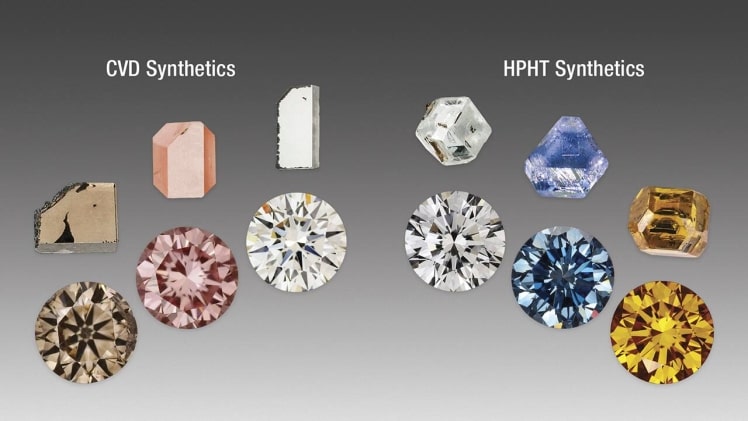When buying a diamond, you should always know how to differentiate between cvd and HPHT. These two processes are used to create diamonds that are colorless or have a significantly improved color. While the HPHT process does not alter the stone’s clarity, it does enhance the color permanently. A diamond that is colorless or has a slightly lighter color should be sold at a lower price than one with a deeper color.
Identifying cvd vs hpht diamonds
The difference between a CVD and HPHT diamond cannot be determined by visual inspection alone. Both processes produce clean, colorless diamonds. This article will clarify the differences between these two types of diamonds. Regardless of their differences, both have some important qualities in common. The main differences between these two types of diamonds are in their grading system. Identifying CVD vs. HPHT diamonds is not difficult once you understand the difference between the two.
HPHT diamonds tend to have metallic flux inclusions, which appear black and opaque to light when it hits the surface. Inclusions that are larger can be easily picked up using magnets. In contrast, diamonds formed using the CVD process do not contain metallic flux inclusions. They contain black graphite or other minerals. These diamonds do not have metallic luster.
Same technology
The differences between natural and cvd vs hpht diamonds are subtle but worth mentioning. HPHT diamonds are created using the same technology, while CVD diamonds are a synthetic. Both varieties are manufactured in a laboratory using the same methods, though a natural diamond has a higher color. A natural diamond will have a yellow hue and will not appear to be a lab created stone.
Natural diamonds contain traces of other elements, such as nitrogen, boron, and hydrogen, which give them their characteristic yellow color. In contrast, synthetic diamonds are created using a laboratory process in which carbon-rich gas is broken down. This process produces a stone that is nearly 100% identical to natural diamonds and is virtually indistinguishable from natural diamonds. Despite their similarities, however, there are important differences between natural diamonds and synthetic diamonds.
Difference between cvd vs hpht diamonds
Identifying HPHT and CVD diamonds is easy with the help of a little research. The diamonds created using the HPHT method are typically narrow slices that have been shaped through the HPHT process. Usually, diamonds created using the HPHT process are the first ones created by this method. It is possible to tell the difference by looking at the size, color, and clarity of these two types of diamonds.
CVD and HPHT are two different techniques for producing a diamond. Although each is distinct, both techniques produce beautiful diamonds that look almost like natural ones. In some cases, the two techniques are equivalent to each other, so you can’t really tell the difference between them. However, you can choose between the two depending on the quality of the stone. Here are some key differences between the two processes.
HPHT treatment
HPHT uses high temperatures to produce a large number of carbon atoms. In CVD Vs HPHT a diamond seed is placed into a vacuum chamber, where carbon-rich gases are introduced. The gases are then heated to several hundred degrees, and as the molecules break down, pure carbon is deposited on the diamond crystal wafer. The advantages of the CVD method over HPHT include the fact that it requires less power and is smaller than HPHT machines. However, compared to HPHT, CVD diamonds often have a black or brown color and must undergo a subsequent HPHT treatment.
HPHT diamonds exhibit a blue hue. A 1.03 H VS1 HPHT diamond is blue and a 1.24 H VVS1 diamond is yellow. The latter is similar to the natural diamond’s yellow color. HPHT diamonds can be either yellow or blue, but a 2.03 E VS1 diamond is the same color as a D/E.
Forms a diamond
HPHT diamonds are made by placing a small diamond seed inside carbon at high pressure and allowing it to melt. The carbon then forms a diamond around the seed. After cooling down, the diamond is ready. Alternatively, CVD diamonds are made in a vacuum chamber, with carbon-rich gasses. Once the carbon pieces start to liquefy, they release plasma that forms a diamond.
Conclusion
Both methods can create a colorless diamond. CVD diamonds are cheaper to produce, but they also exhibit black flux or graphitic inclusions. Whether or not CVD or HPHT is best for your needs depends on the size and shape of your stone. Ultimately, the two processes are equally effective at creating a flawless diamond. The only difference between the two is morphology’s

